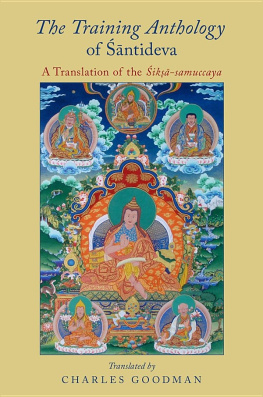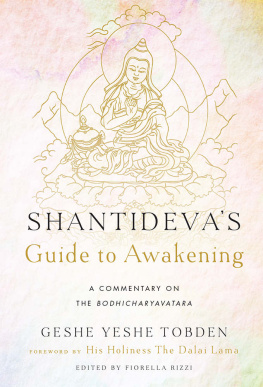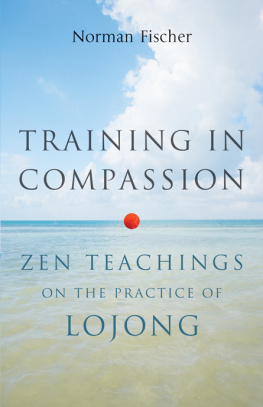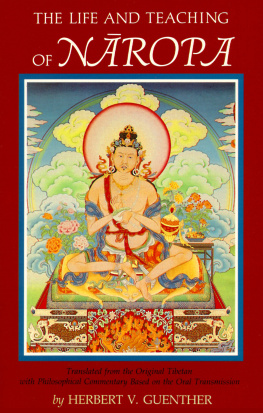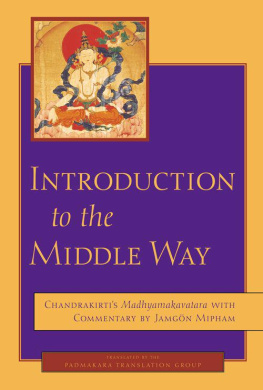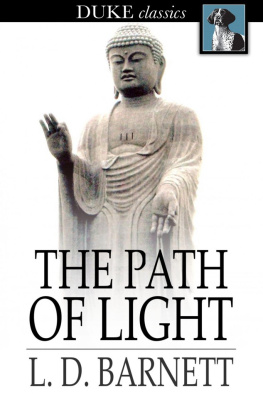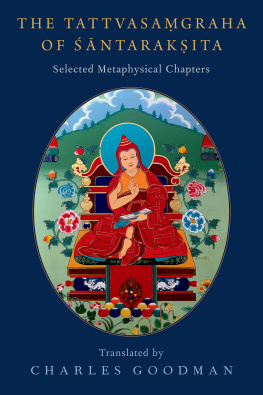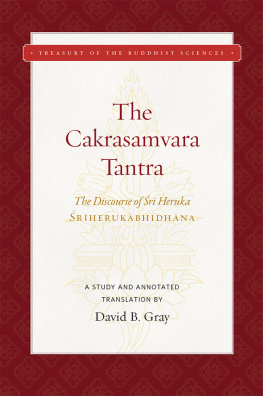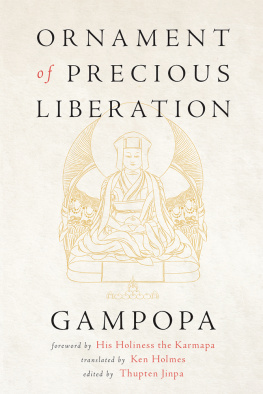The Training Anthology of ntideva

Oxford University Press is a department of the University of Oxford. It furthers the Universitys objective of excellence in research, scholarship, and education by publishing worldwide. Oxford is a registered trade mark of Oxford University Press in the UK and certain other countries.
Published in the United States of America by Oxford University Press
198 Madison Avenue, New York, NY 10016, United States of America.
Oxford University Press 2016
In addition to other sources of the original text, this translation uses Sanskrit text from ik-samuccaya of ntideva, first edition edited by Dr. P. L. Vaidya, second edition edited by Dr. Sridhar Tripathi, published by The Mithila Institute, 1960; 1999
All rights reserved. No part of this publication may be reproduced, stored in a retrieval system, or transmitted, in any form or by any means, without the prior permission in writing of Oxford University Press, or as expressly permitted by law, by license, or under terms agreed with the appropriate reproduction rights organization. Inquiries concerning reproduction outside the scope of the above should be sent to the Rights Department, Oxford University Press, at the address above.
You must not circulate this work in any other form and you must impose this same condition on any acquirer.
Library of Congress Cataloging-in-Publication Data
Names: Santideva, active 7th century, author. | Goodman, Charles, 1975- editor, translator.
Title: The training anthology of Santideva : a translation of theSiksa-samuccaya / Translated by Charles Goodman.
Other titles: Siksasamuccaya. English
Description: New York : Oxford University Press, 2016. | Includes bibliographical references and index.
Identifiers: LCCN 2015044389 (print) | LCCN 2015047765 (ebook) | ISBN 9780199391349 (cloth : alk. paper) | ISBN 9780199391356 (pbk. : alk. paper) | ISBN 9780199391363 (updf) | ISBN 9780199391370 (epub) Classification: LCC BQ3242.E5 G66 2016 (print) | LCC BQ3242.E5 (ebook) | DDC
294.3/85dc23
LC record available at http://lccn.loc.gov/2015044389
Contents
| BCA | Vaidya, P. L., ed. 1988. Bodhicaryvatra of ntideva with the commentary Pajik of Prajkaramati. Darbhanga: Mithila Institute. English verses cited are usually quoted or adapted from Crosby and Skilton, trans. 1995. The Bodhicaryvatra. New York: Oxford Worlds Classics. |
| DN | Dgha-Nikya. See Maurice Walshe, trans. 1995. The Long Discourses of the Buddha. Boston: Wisdom Publications. |
| Edg. | Edgerton, Franklin. 1998 (first published 1953). Buddhist Hybrid Sanskrit Grammar and Dictionary, vol. 2. Delhi: Motilal Banarsidass. |
| ITD | Duff, Tony. 20002014. Illuminator Tibetan-English Encyclopedic Dictionary. Mac edition. Kathmandu: Padma Karpo Translation Committee. |
| MN | Majjhima-Nikya. See Bhikkhu namoli and Bhikkhu Bodhi, trans. 1995. The Middle Length Discourses of the Buddha. Boston: Wisdom Publications. |
| MW | Monier-Williams, Monier. 1995 (first published 1899). Sanskrit-English Dictionary. New York: Oxford University Press. |
| NTD | Ntrtha Online Tibetan-English Dictionary, http://www.nitartha.org//home.html. |
| PLV | Dr. P. L. Vaidya. See Skt. |
| PT | Peking Bstan gyur, dbu ma ki. Draft of electronic edition, prepared by Central University of Tibetan Studies; on file with the author. |
| Skt. | The Sanskrit language, or the Sanskrit text used for this translation: Vaidya, P.L., ed. 1999. ik-samuccaya of ntideva. 2nd edition Tripathi, Sridhar, ed. Darbhanga: Mithila Institute. |
| SR | Samdhi-rja-stra |
| Tib. | The Tibetan language, or the primary Tibetan text used for this translation: Sde dge Bstan gyur, dbu ma khi. Delhi Karmapae Chodhey, Gyelwae Sungrab Partun Khang, 1985. Electronic edition, Tibetan Buddhist Resource Center. |
The original author of the Training Anthology was a North Indian monk named ntideva. He is known and revered mostly for his other major work, the Bodhicaryvatra: a summary, in beautiful verse, of the spiritual path of the Mahyna form of Buddhism, of this religions distinctive doctrines, and Bodhisattva.
Other than what we can glean from his books, we have little reliable evidence about the events in the life of ntideva. As is regrettably common in the study of pre-Islamic India, we do not even have very precise information about the dates of his life. Crosby and Skilton state that he may have lived sometime between 685 and 763 ce. so we can conclude that the Introduction must have been composed before that date.
North India, but had entered a period of decline that would ultimately prove terminal.
At one time, the Buddhist monastic community had been lavishly supported by a flourishing merchant class based in Indias trading cities. High-caste Hindus, fettered by rules that forbade eating meals prepared on board a ship, were unable to make long trading voyages. As a result, Buddhists enjoyed a dominant position for centuries in the lucrative trade of the Indian Ocean. But the rise of Islam brought powerful and aggressive Arab competitors who rapidly seized the lions share of this trade for themselves. Indias total urban population decreased, and the merchant communities that had supported Buddhist institutions withered. Most of the Buddhist monasteries gradually disappeared; a few major ones survived, becoming major centers of higher education. These monastic universities offered instruction not only in religious and philosophical topics, but in secular subjects such as grammar, rhetoric, medicine, and astronomy, among others. Among these, the greatest center of Buddhist learning and scholarship in all of India was the massive complex of Nland, in what is now the modern Indian state of Bihar, not far from the site of the Buddhas Awakening. It was here that ntideva studied, practiced, and taught.
The miraculous story of ntideva and his first teaching of the Introduction has been told over and over: in classic Tibetan texts, in works of modern scholarship, and by spiritual teachers from all the Buddhist lineages of Tibet. According to the traditional account, ntideva was born a crown prince, but after extensive meditation practice, he made a spiritual connection with the great bodhisattva Majur and eventually renounced the world. ntideva then took up residence at Nland to pursue his monastic vocation.
Unfortunately, ntidevas fellow monks were not impressed with his motivation to practice. They considered him so lazy that they began to refer to him as a bhusuku. This is a kind of Sanskrit acronym composed of the first syllables of words meaning eat, sleep, and defecatebecause so far as they could tell, that was all he ever did. In particular, ntideva did not seem to be engaged in the central activity of Nlands student monks: the memorization and recitation of Buddhist texts.
Given that ntideva did not seem to be taking advantage of the remarkable opportunity for study that had been offered him, the leading monks of Nland decided, according to the story, to teach him a sharp lesson. They asked ntideva to publicly recite a text of his choosing at an upcoming religious festival. And to make the experience even more humiliating, they built an elaborate throne for him to sit on while teaching.

